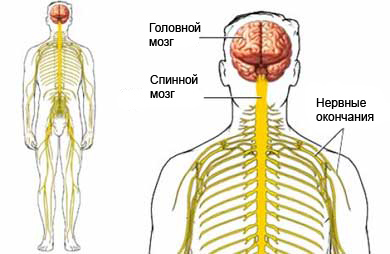Amyotrophic lateral sclerosis
Description bokovogo amiotroficheskogo sclerosis
Amyotrophic lateral sclerosis (CHIEF) is a progressive nervous system disorders. It gradually destroys the nerves, responsible for muscle movement. With time, ALS leads to almost total paralysis of motor muscles, including respiratory.
Forecast poor survival – in most cases because of the progressive nature, and because of a possible respiratory failure. After the diagnosis life expectancy ranges from 2 to 5 years. The five-year survival rate of 14% -25%, and about 10% of patients survive more 10 years. Generally, the younger the age of onset, the slower the disease progresses.

The causes of amyotrophic lateral sclerosis
Causes of ALS is unknown, Researchers are inclined to favor the genetic origin of the disease.
Risk factors for amyotrophic lateral sclerosis
Factors, which increases the risk of amyotrophic lateral sclerosis:
- I have a family member with ALS;
- The presence of certain genetic mutations.
The symptoms of amyotrophic lateral sclerosis
Symptoms include:
- Progressive weakness in arms and legs (often only one side) for weeks or months without changing sensory abilities;
- Problems with the deduction of items in the hands of;
- Tremors while walking;
- Amyotrophy;
- Involuntary muscle contractions;
- Unpredictable mood changes;
- Clumsiness;
- Overactive reflexes;
- Gibberish;
- Hoarseness;
- The problem with chewing and swallowing, resulting in frequent choking and dry retching;
- Weight loss due to failure of the body of food;
- Labored breathing;
- Excessive salivation, drooling;
- Coughing, which turns into pneumonia.
Diagnosis bokovogo amiotroficheskogo sclerosis
The analyzes do not accurately diagnose ALS, and are used for, to rule out other diseases. Tests include:
- Electromyogram (DOH) – to look for progressive muscle weakness and twitching;
- CT scan – to make pictures of structures in the head;
- MRT – analysis, which uses magnetic waves, to make pictures of structures in the head;
- Blood tests, to eliminate metabolic, exposure to heavy metals, or rarely infections (eg, Lyme disease, HIV, human T-lymphotropic virus);
- Poyasnichnaya puncture – the procedure for the selection of the cerebrospinal fluid (CSF);
- Urine.
Bokovogo amiotroficheskogo sclerosis treatment
Currently, there are no treatments for ALS. To relieve symptoms using the combined therapy, which may include:
- Medication;
- Working with doctors and support groups;
- Participation in religious and social activities.
Medication
The drug Riluzole has been approved after tests, as a, slightly prolongs survival. The drug may slightly improve the functioning, but that does not stop the disease from progressing. Studies have shown, that the addition of lithium carbonate (a medicine for the treatment of mood disorders) to riluzole may slow the progression of ALS and prolong survival.
The doctor may prescribe certain medications to treat the symptoms of ALS:
- Diazepam (Valium), Baklofen (eg, Baclofen), dantrolene or to reduce spasticity;
- Nonsteroidal anti-inflammatory drugs (NSAIDs) and other medicines to reduce pain;
- Atropyn (eg, Atropos), Scopolamine, or antihistamines – to reduce the strong salivation;
- Antidepressants and anti-anxiety medication.
Prevention bokovogo amiotroficheskogo sclerosis
At this time there is no method of prevention of ALS, since it is unclear the reason of its occurrence.
